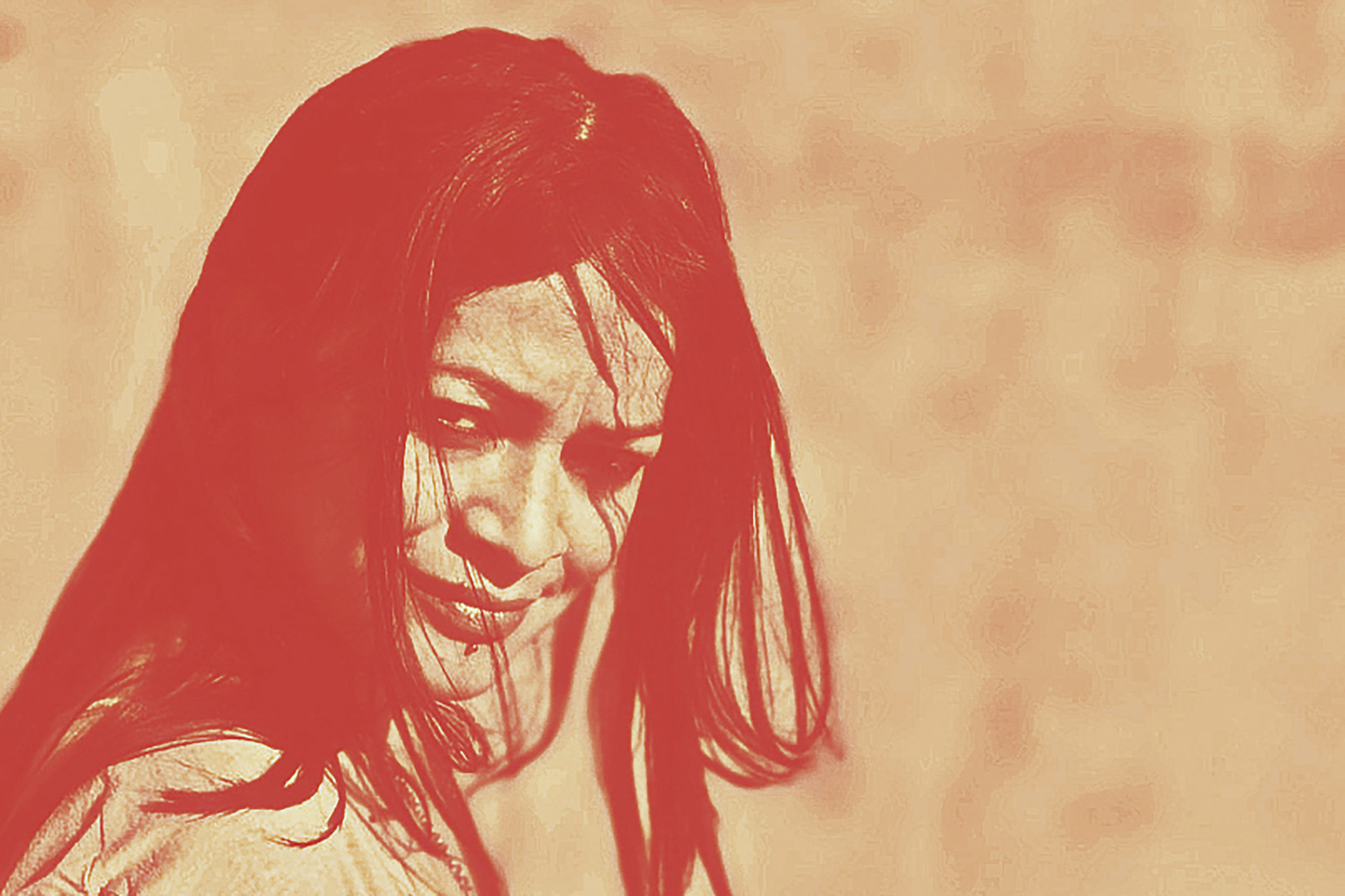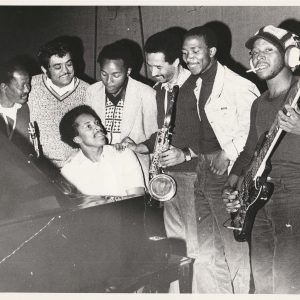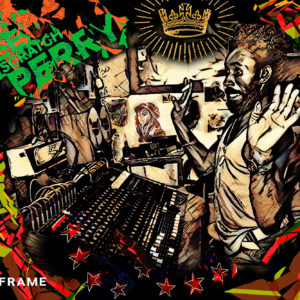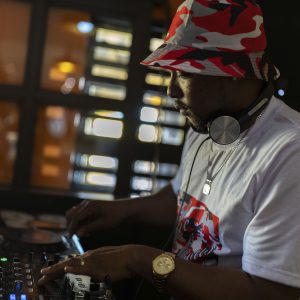Desert winds blow through Azu Tiwaline’s work
The musician found a new sound in the silence and space of Tunisia’s el-Djerid region, resulting in an album that is ‘organic, minimal and natural’.
Author:
24 September 2021

From initial blackness the camera starts panning over a dry and desolate landscape, the sound of a heartbeat at the centre of a howling wind. Dancer Mellina Boubetra comes into view as the bass of a throbbing gong joins in. Synths unfurl and delicate bells scrape across the surface of the song, which has a calm but eerie tension.
Boubetra makes small motions, rolling her hands, arms and shoulders, shifting her feet, bending her knees. As the song builds, so her movements become more expressive. Boubetra’s choreography and the camera work reflect the change in tempo as the song reaches its powerful close.
It is clear that when it comes to Draw Me a Silence, Azu Tiwaline – the new moniker of Tunisian artist Donia, which translates as “wind’s eyes” – has saved the best of the past two years for last. And Eyes of the Wind, featuring Boubetra, is the closing song on the extended version of the album.
Tiwaline released Draw Me a Silence Part. I on I.O.T Records in March 2020, with Draw Me a Silence Part. II following in May that year. She released three remixes in March this year by Berlin’s Don’t DJ, London’s Laksa and Lyon’s Flore, and an extended version of Draw Me a Silence a month later, featuring previously unreleased bonus track Eyes of the Wind.
Boubetra’s solitary act of communion with the sparse landscape and the use of the wind as a sound element successfully convey the heart of Draw Me a Silence. Born in Paris to a Berber Tunisian mother and Cambodian father, Donia grew up in Ivory Coast before moving back to France at the age of 14 to escape the country’s civil war. She has since lived in China, India, Senegal, Mongolia and Reunion Island. She says she loves the “unknown”.
Silence and space
Donia became the owner of a small estate in the el-Djerid region of southern Tunisia five years ago, when her mother died and left it to her.
“Sometimes you plan things in your life,” says Donia. “Sometimes, it is life who enforces you some deep and hard changes. When my mother passed away, she left me a beautiful paradise in the Sahara. A place that I have loved so much for so many years. I had to decide to leave everything and go there to take care of it. At the same period, there were also some personal inner changes in my life.”
What resulted was a new moniker and a new album deeply influenced by the open space and silence of the desert that she calls her new home.
Related article:
“The most beautiful gift that the desert could offer to you is to teach you how space and silence are pureness,” she says. “In nothingness, there is the beauty of infinity. In the silence, you can hear the most beautiful notes. As soon as I produced some music there, everything became more sweet, organic, minimal, natural. Nature around is so peaceful, full of light and deep vibes, silence and space.
“It was time to enter into a new cycle. A few months later, this new identity Azu Tiwaline was born.”
‘Mad youth’
Donia’s musical beginnings can be traced to the late 1990s in Paris, where she began releasing techno music under the moniker Loan.
“Those were the years of a mad youth,” she says. “Rocked by the first raves in Europe. At this time I was not even 20 years old. The music I was making was quite tough, up tempo and very energetic. Like me, I guess.” She says this period schooled her and gave her the conviction to pursue the life of an artist.
Donia created across a wide spectrum of electronic dance music, from techno to two-step and breakbeat to dubstep. “The only common thing for me since all these years is this repetitive use of drums, percussions, through some strong dub effects.” She says her love of dub music knows no bounds and it is her “biggest influence”, particularly the “mystical and spiritual” nature of the music.
Related mixtape:
“We just lost Lee Scratch Perry,” she says. “For me he was such an inspiration, a true genius with an incredible vision. What he brought in electronic and dance music is just fabulous.”
One listen to Draw Me a Silence and it is clear that Donia is a keen student of not only Perry but also experimental dub luminaries such as Adrian Sherwood and Bill Laswell, and the impact these inventive minds have had on electronic music, particularly techno.
New sound
“Uniting the bonds that connect Berber music, dub culture and techno hypnosis,” says Tiwaline’s Bandcamp page. As a sound bite it does give the reader a sense of the music, but Donia’s new album defies easy categorisation.
Organ Dub Warriors starts out as a field recording, which is invaded by throbbing synths and ends up as a monster dub production driven by fierce percussion, while Luz Azul begins with simple percussion, builds to a dub production driven by throbbing bass and ends as a impressively slick and subtle techno tune, with what sounds like the ghost of a traditional horn droning mournfully in the background.

“I’m trying to tell stories, drawing sonic paintings,” she says. “I don’t feel comfortable with upfront melodies because your attention is too much focused on it. I love working on the atmospheres, the background, fine sonic scenery changes. It feeds your imagination, then you can start to travel without moving.”
Draw Me a Silence has qualities reminiscent of other styles of music. Berbeka’s melody sounds as if it came straight from Detroit techno’s first wave while deep dub Yenna sounds like something that could have been released on the Cosmic Bridge label run by breakbeat legend Om Unit. However, the whole into which these signposts cohere is unique.
Chasing the trance
Donia says stambeli music, a “musical-therapeutic possession rite” from el-Djerid, had a major influence on the album. “It mixes music, dances and songs during which some participants go into a trance and embody supernatural entities. In Morocco, we call it ‘gnawa’, in Algeria ‘diwan’. I’ve always been fascinated by elevation music and rituals. I attended several in Ivory Coast when I was young and since this time, I’m trying to understand how music could be medicine.
“During my childhood in Ivory Coast, I listened to a lot of traditional percussion ensembles. First I was into African dances and then I went into learning djembe.”
Related article:
Her drumming lessons didn’t last after her family fled to France, but Donia soon discovered her first rhythm box, a Roland R-8 MKII. “It was the beginning of the new area, but with the same roots. I never studied traditional African rhythms properly, but I listen a lot, try to understand the structures.”
“When I started to compose my album Draw Me a Silence, it was an evidence for me that I have to use some typical instruments and rhythms. Music reflects my own state but also the environment I am in, which influences me a lot,” she says.
New connections
Donia says she was “feeling like a superhero” on the day she shot the video for Eyes of the Wind. “So before going to sleep, I was thinking about this new EP I had just finished. I said to myself, ‘Which label could be the perfect dream for me to release that?’ Livity Sound was my first idea as it is one of my favourite labels.”
The parallels between Tiwaline’s music and Livity are clear. Red Viper from Draw Me a Silence is a dead ringer for something that could have been released on the Bristol-based label. “I dared to send a demo to Peverelist,” she says, referring to the artist who runs the label. “The day after, I had an answer.”
Related article:
Livity released Tiwaline’s Magnetic Service EP in July 2020. The label and its artists, including Pinch, Hodge, Kotown, Batu and Peverelist, have been at the cutting edge of where techno and sound system culture meet since the label began in 2011 and Donia says the hook-up has helped her connect with fantastic people around the world. On Magnetic Service EP’s title track, she collaborates with Paris-based sound artist Cinna Peyghamy, who plays manipulated tombak, an Iranian percussion instrument.
The results are spectacular and suggest that Draw Me a Silence is just the beginning for Tiwaline, whose rebirth in the deserts of el-Djerid is something the world should be celebrating.




